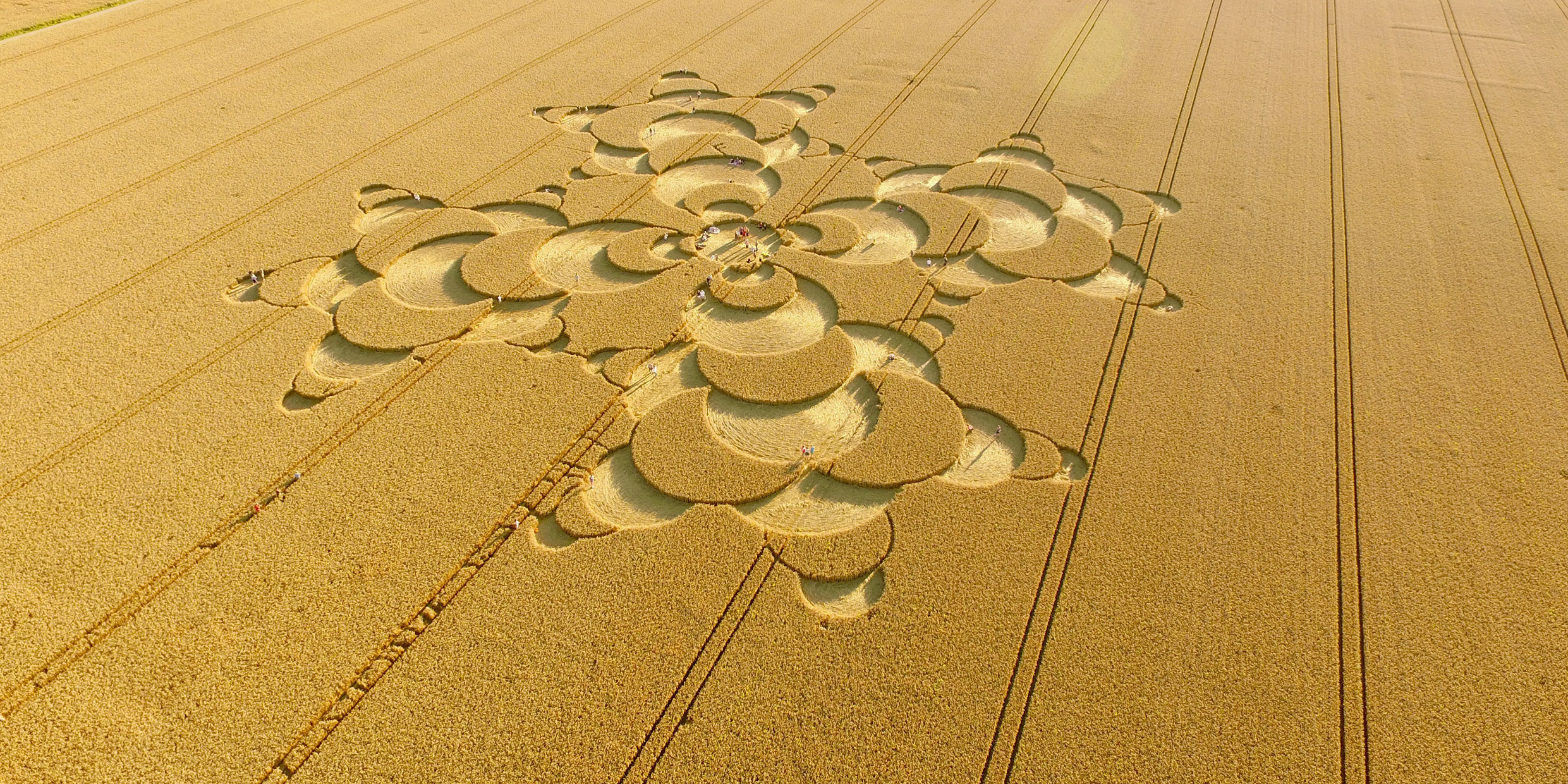Originally published 3 January 2000
My sister gave me a crop circle calendar for Christmas. That’s right, the Llewellyn’s 2000 Crop Circle Calendar, most of the contents of which are drawn from the bucolic countryside of southern England, the Holy Land of the crop circle phenomenon.
Crop circles are designs of flattened stalks that appear overnight in fields of wheat, corn, barley or canola. The first documented designs, in the 1970s, were simple circles, of the sort that might have been made by a small whirlwind or frolicking hedgehogs. The designs have become increasingly complex, but most still have a circular pattern at their core.
In fact, crop circles have become so complex that no one any longer doubts that they are made by intelligent beings.
The question is, what intelligent beings?
In the minds of the New Age faithful, the answer usually involves alien spacecraft, a cosmic consciousness, or even an intelligent spirit of the Earth itself.
Skeptics are inclined to locate the “intelligent beings” within the human family: hoaxers, crop circle “artists,” or even the farmers who own the fields and charge admission to the circles.
Which brings me to why I received the calendar for Christmas.
I’m pretty much the complete skeptic. Like Sergeant Joe Friday, I want to see “the facts, M’am, just the facts.” If I don’t know the answer to something — the origin of crop circles, consciousness, or life — I’ll opt for the hypothesis that evokes the fewest spooky powers. That’s the scientific way.
My sister, on the other hand, was a New Ager before the New Age was born. She enthusiastically embraces every paranormal phenomenon that comes down the pike: crop circles, alien abductions, crystal power, body auras. If science can’t prove it wrong, she’ll give her assent.
For her, the crop circle calendar with its stunning aerial photographs of intricate cereal designs is prima facie evidence of a paranormal force that no one can explain. She is baffled that I am so unreceptive to what are obviously messages from the transhuman forces that (she believes) permeate the universe.
For me, the crop circles are impressive precisely because they are human artifacts. They demonstrate what an ingenious prankster can do with stakes, string, and a board, or maybe a garden roller.
What we are talking about here are two attitudes towards evidence or the lack of it. I am a Skeptic. My sister is a True Believer.
Skeptics are reluctant to believe anything without reproducible empirical evidence. They accept the evolving nature of truth and are willing to live with a measure of uncertainty. They are always a little lost in the complexity of the cosmos, but they trust the power of the human mind to make sense of things. Their central article of faith (yes, even Skeptics have faith) is Ockham’s Razor: Never assume a complicated explanation when a simple one will do.
True Believers are less confident that humans can sort things out for themselves. They look for answers from God, spirits, celestial powers, or extraterrestrials. They are willing to believe whatever makes them feel good, provided the counter-evidence is not overwhelming. They reside at the psychological center of a universe proportioned to the human scale, and they are convinced that some higher power takes note of their existence.
Why are some people Skeptics and others True Believers? My sister and I were brought up in the same environment, with more or less the same schooling. We share most of our genes. And yet on the matter of crop circles — and a host of similar issues — we are as different as night and day.
As best I can recall, I was a Skeptic from the cradle. My sister was born a True Believer. So is there a Skeptic gene? A True Believer gene? It’s hard to believe that genes spinning proteins could account for such differences of intellectual attitude.
Whatever the explanation, the evidence suggests that we are overwhelmingly a nation of True Believers. Polls show that more people are interested in astrology than astronomy, and more people are interested in angels than atoms. The New Age sections of book stores are invariably bigger than the science sections.
No one can live without some measure of unsubstantiated faith, but science can only thrive among Skeptics. Our confidence in scientific knowledge is based on systematized doubt; a successful scientific idea must run a fierce gauntlet of peer review. A scientist must always be ready to say, “I don’t know.”
I don’t know who or what made the beautiful crop circles in my Christmas calendar, but I’d be willing to bet that it was humans. Not because I think alien spaceships are an absolute impossibility, but because a Skeptic always opts for the least exotic explanation. We know that humans are clever enough to make these wonderful artifacts, and we know that the world is full of mischievous hoaxers with a sense of humor. The evidence for extraterrestrials is dicey at best.



